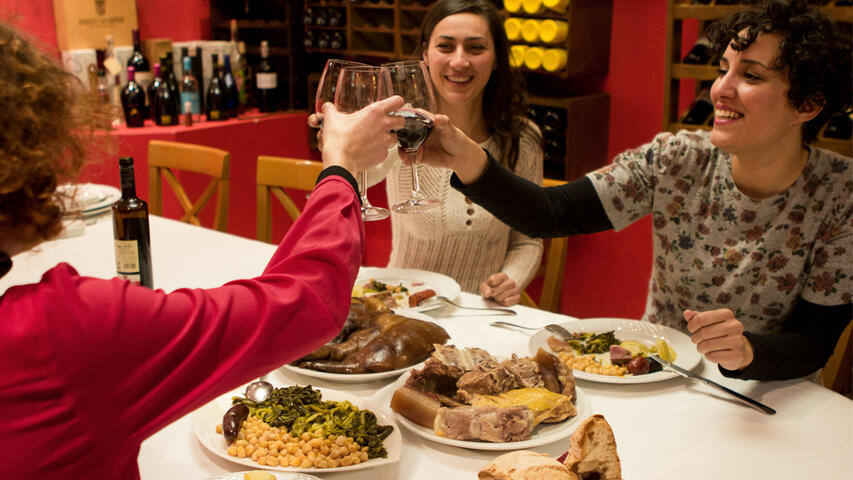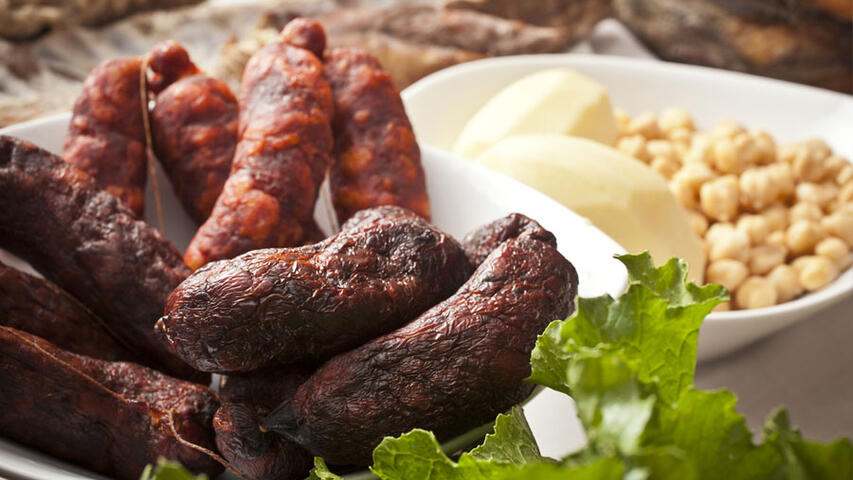Lalin stew fair
Lalín, or the art of making the best cocido (stew)
The exaltation of this dish has reached the status of Festivity of International Tourist Interest.
In winter, a good cocido (stew) is a must. The Rías Baixas are the ideal place to enjoy this gastronomic pleasure, and in February Lalín becomes the world capital of this delicious traditional dish. The town of Deza celebrates its Cocido Fair, a festival declared of International Tourist Interest that every year brings together tens of thousands of people around this exquisite and succulent culinary preparation.
The fair will be celebrated in style, with a varied programme that combines gastronomy, carnival, music and numerous activities for all ages. All of this revolves around a recipe with more than a dozen ingredients that, combined to perfection, result in the best stew. Backbone, streaky bacon, ribs, ears and salted claw, tongue, hen, veal and Lalín chorizo sausage are the main meats in a dish in which vegetables and pulses also play an important role, so large beans, chickpeas, potatoes and turnip greens are never missing.
Institutionalised in 1969 thanks to the joint proposal of six mayors from the Deza region, this event pays homage to the traditional preparation of the area, a way of preparing stew that is far from that of others in Spain such as maragato, lebaniego, montañés, madrileño or escudella.
Always a prelude to the Carnival festivities, the Lalín Cocido Fair and the weeks of activities leading up to it are an ideal time to get to know the whole region.
And if tasting a Lalín stew is an experience that knows no clock, neither does the preparation of this dish. In fact, the preparation begins up to four days before eating the stew. It is then that the pork shoulder has to be desalted, changing the water, which has to be cold, every 24 hours. Two days later, each piece of meat to be added to the casserole is thoroughly washed, repeating the process carried out with the 'lacón'. The day before the day on which the stew is to be cooked is the time to soak the chickpeas and broad beans, which, as explained in Lalín, should always be placed in separate containers.
Winter is, therefore, one of the best times to visit the northern part of the province of Pontevedra. The month of the cocido brings this dish to thousands of diners, who flock to the capital of Pontevedra and its many restaurants every day. In addition, this festival is always accompanied by a wide-ranging leisure and cultural programme which includes ethnographic, musical and artistic activities, such as the Cocido das Artes, and which also includes charity events.
The festival, during which the traditional stalls selling meat and vegetables are set up in the Campo da Feira Vella, has in the slaughter of the pig another of its focal points of attraction. This ancestral task, which was carried out in almost every house in the Galician countryside until relatively recently, is now done every year in a different parish and is accompanied by the tasting of the traditional products of the pig slaughter.
Always a prelude to the Carnival festivities, the Lalín Stew Fair and the weeks of activities leading up to it are an ideal time to get to know the whole region. Also made up of the municipalities of Silleda, Agolada, Rodeiro, Dozón and Vila de Cruces, Deza offers a series of unique spots: the waterfall of the river Toxa, the monastery of Carboeiro, the pendellos of Agolada, the mountain range of O Candán, the islands of Gres or the pazo of Liñares are places that always convince those who visit them.

